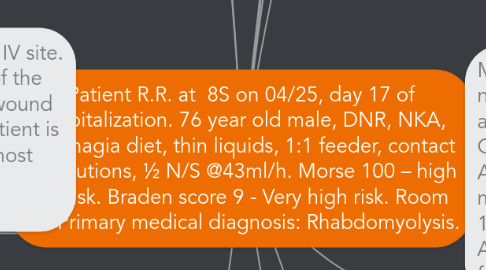Patient R.R. at 8S on 04/25, day 17 of hospitalization. 76 year old male, DNR, NKA, dysphagia diet, thin liquids, 1:1 feeder, contact precautions, ½ N/S @43ml/h. Morse 100 – high fall risk. Braden score 9 - Very high risk. Room Air. Primary medical diagnosis: Rhabdomyolysis.
da Luciana Svilpa



